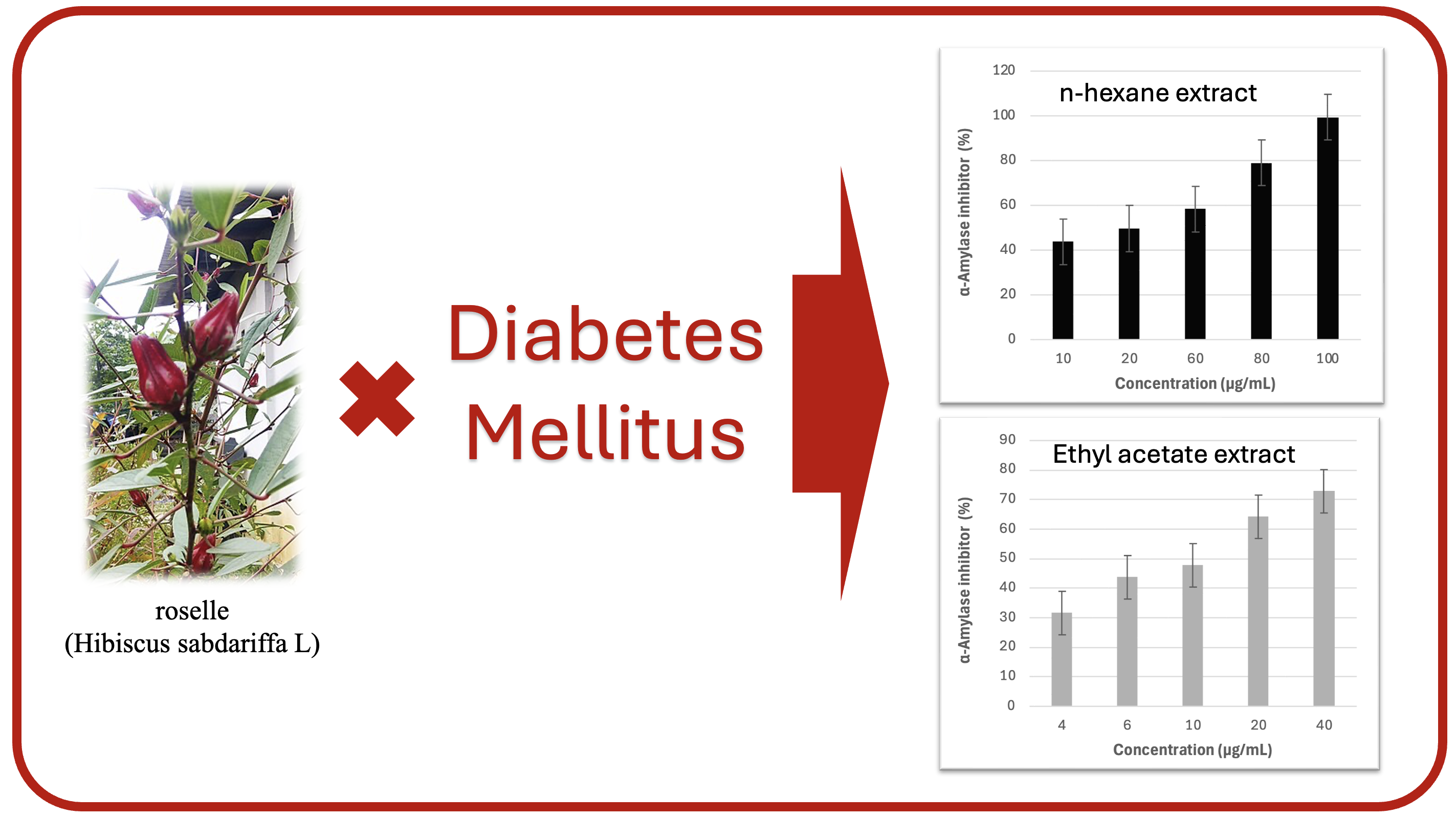Exploring the Alpha-Amylase Inhibitory Potential of Roselle Calyx Extracts (Hibiscus sabdariffa L) in n-Hexane and Ethyl Acetate Fractions
Abstract
Diabetes mellitus is a metabolic disorder characterized by elevated blood sugar levels, which result from impaired insulin excretion or sensitivity. Among the various medicinal plants utilized by the Indonesian population, roselle (Hibiscus sabdariffa L) stands out as a potential remedy for several diseases including diabetes mellitus. This study aims to assess the inhibitory potential of roselle on α-amylase enzyme activity. The roselle calyx extraction method was performed through multilevel maceration using n-hexane and ethyl acetate solvents. Testing the activity of inhibiting the α-amylase enzyme was carried out in vitro using acarbose as a comparison. The findings revealed that the n-hexane extract of roselle calyx exhibited potent α-amylase enzyme inhibition with an IC50 value of 20.43 µg/mL. Similarly, roselle calyx ethyl acetate extract demonstrated strongl α-amylase enzyme inhibitory activity, characterized by an IC50 value of 10.13 µg/mL. Meanwhile, acarbose exhibited robust α-amylase inhibitory activity, possessing an IC50 value of 4.04 µg/mL. It is worth noting that all these substances displayed α-amylase enzyme inhibitory activity in the very active category, although their efficacy was not equivalent to acarbose.






















